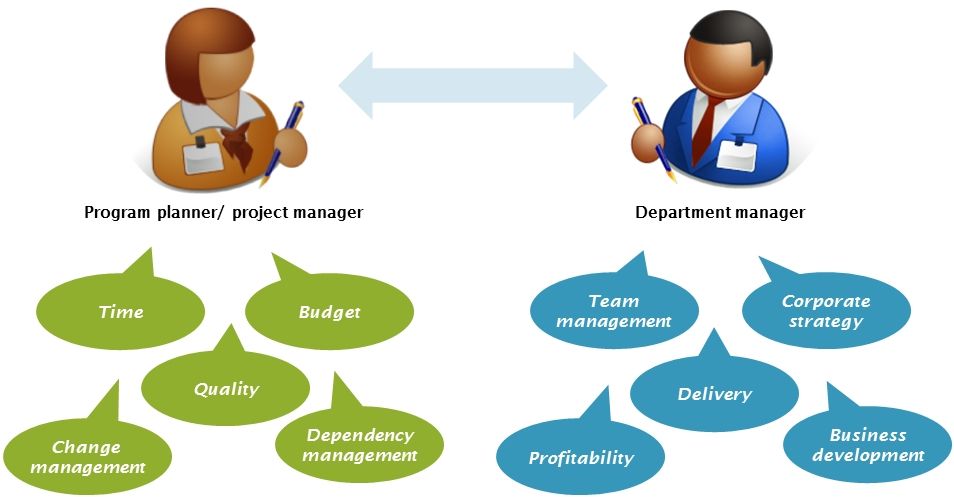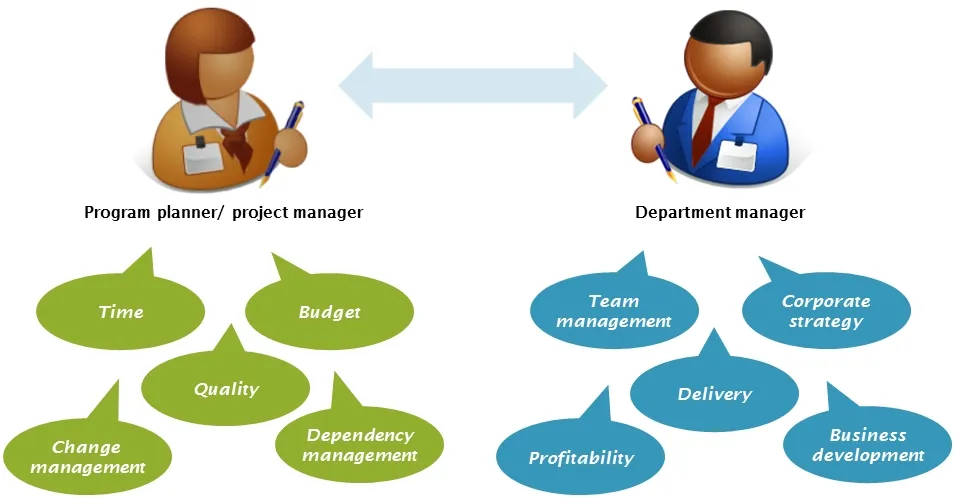Top Reason for Conflicts in Program Management in Matrix Organizations
March 15, 2012
In matrix organizations, program and department managers pursue competing goals. This misalignment is the main driver of conflicts in program management.
I share this because conflicts in matrix organizations are not a flaw – they are a natural result of competing goals. With transparency and alignment, programs can thrive despite structural complexity.

Program management in matrix organizations works little different than managing a regular project. While a program owner handles the WBS and the schedule, work packages are delegated to departments with focus on delivery. More background information can be found in my last article.
This article reflects on the two main roles contributing as actors in the planning process and how their goals compete with each other. In the given scenario we are facing following main roles:
- Program planner: a.k.a. program manager, program coordinator, project manager
- Department manager: a.k.a. resource manager, team lead, manager, head of
Both roles are having competing goals to effectively drive their business (as shown in the figure below).

The program planner has goals similar to a project manager. This is time, budget and quality. Whereas the department manager has to develop business, drive innovation, manage the team and increase profitability.
As you might imagine, those goals compete with each other in terms of prioritization. Let’s view an example:
- A program manager delegates two work packages to departments X and Y. Both tasks depend on each other (X needs to be finished before Y can start).
- Now, department X is having work packages of six different programs to deliver and two key resources fall out.
- What is the basis for the department manager to prioritize? Maybe it is profitability or team management? Most likely, it is not aligned with the goal of a single program manager.
- Let’s assume a prioritization has been done. Who needs to be informed now? Or should I better ask: Who is going to be informed?
For sure, there are more centers of conflict. But these competing goals are the top reason for conflicts. It has happened to me in almost every project I have conducted over the last years. And there is only one resolution: Transparency. We need to resolve those independent planning platforms for a program and a department.
If you are interested in how to bring up an integrated solution that establishes transparency into each role’s planning and highlight deviations, stay tuned here or visit my session on the Microsoft Project Conference (#mspc12) in Phoenix, AZ, March 20th–22nd (abstract for session #pc310).
You’ve read about the two contributing roles and their competing goals. In the next article, we will break down the goals into tasks relevant for program management in matrix organizations.
Ingo Meironke, PMP – Manager at Campana & Schott - @meiroTweet